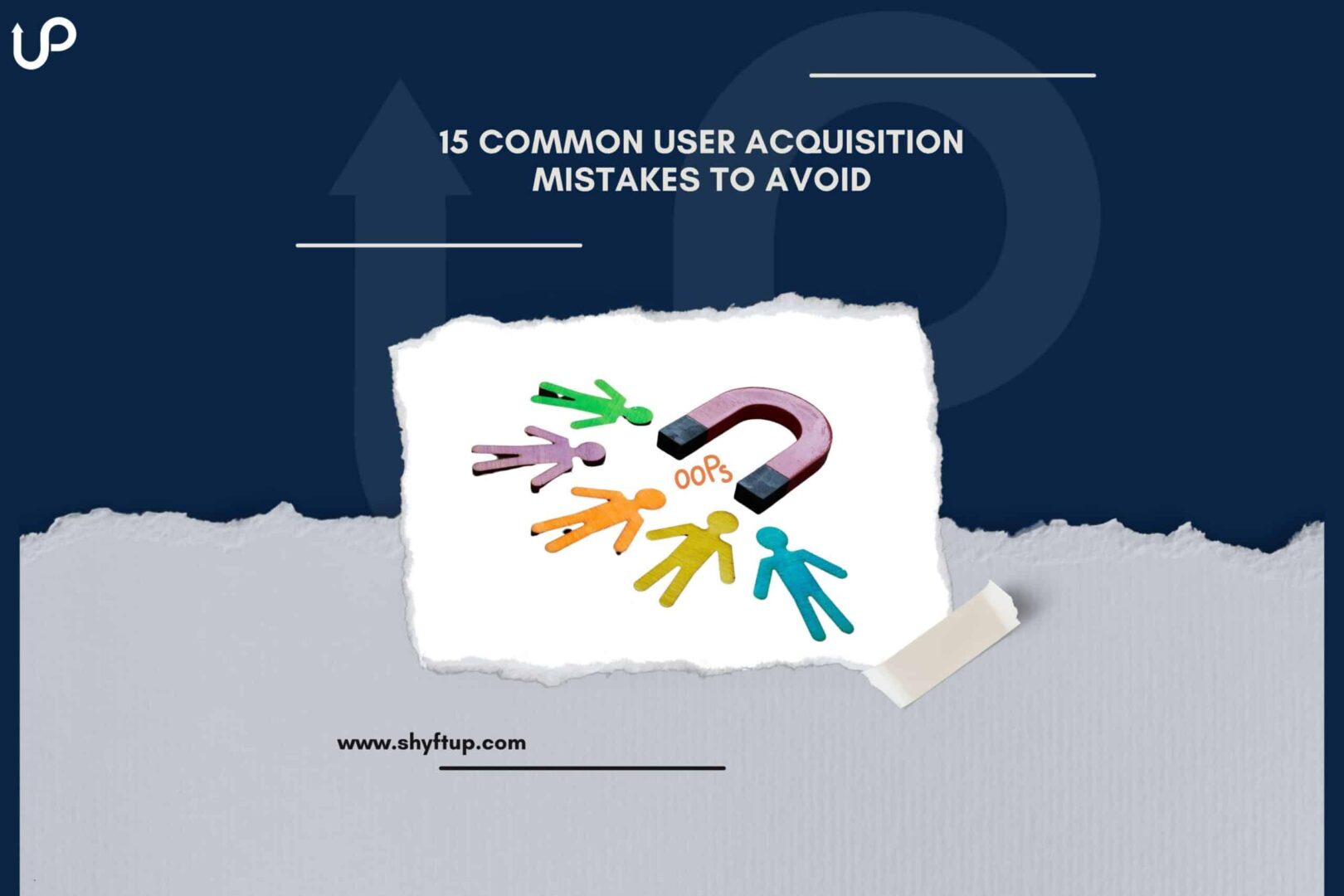
What are the top 15 user acquisition mistakes to avoid? The most awful, horrendous, and unfortunate blunders to avoid at all costs?
Here’s a summary of all 15 user acquisition mistakes:
1) Not diversifying
You should diversify your ad spend to safeguard your investments and gain the most out of your learning experience. First and foremost, if you’re investing every aspect of your marketing efforts into Google Ads, Meta, TikTok, or any other single channel, then you have nothing to compare it with. Furthermore, if your campaign begins to experience success or failure due to a lack of data, then it will be difficult to determine whether or not the investment was worth it.
2) Reducing iOS spend because of SKAN
It has been over two and a half years since ATT was introduced, and far too many advertisers and marketers are still limiting their iOS spend. But since it is usually the best-performing platform, this is a big mistake, and you’ll miss tremendous opportunities. Learn SKAN, use the right tools for SKAN, and you’ll be fine.
3) Not hitting SKAN privacy thresholds
To effectively address the challenges of not getting data through SKAN it’s crucial to build scale in each SKAN campaign. Also, having access to modeled data in SKAN Advanced Analytics from Singular helps reconstitute data you used to have with IDFA, like cohorts, and it comes with confidence intervals, so you know how much to trust it.
4) Not always testing
It’s tempting to advertise your app in a manner that matches your own expectations, but you may be off target. The ways people view and think about your app may not be what you had in mind when developing your campaign. By testing, you can discover which opportunities are out there for you to take advantage of them.
5) Not building a consistent creative testing approach
A reliable and consistent testing strategy in which both the scope and plan are clearly defined offers the most effective approach to testing overall. A defined testing methodology is crucial for ensuring that tests can be compared against each other in a fair and comparable manner.
6) Not aligning ads
CTR and CVR can be affected by ads that are either fake or that don’t resonate with your core value proposition. In fact, if someone is offended by the creative you used to gain access to them and tricked them into installing your app, they are likely to remove your app quickly, which will have a detrimental impact on retention.
7) Boosting bad campaigns
If your campaign is not generating the results you want, it may be due to a lack of data or not having enough volume. Before boosting spend, make sure to fix the tactics or strategy. Some self-attributed networks may be over-reporting revenue, having installs, or performing different in-app actions, so a campaign may seem to be performing well when it is not. If you don’t compare with third-party data sources such as an MMP or your own internal tracking systems, you won’t see that.
8) Sticking with poor creatives
It happens: you’re fond of that one creative or that one call to action, but it’s not working for you. The best choice is to move on to something that might, even if it hurts. Decide based on data. And remember: if you do not change anything, then the data won’t magically get better.
9) Ignoring ad placement
Adtech has a high level of complexity, which makes it easy to make user acquisition mistakes. The way in which ads are viewed varies from one ad placement to another, even on the same platform, partner, or channel. Pay attention to placements to maximize results.
10) Only looking at in-platform reporting
To avoid reporting errors, consider different sources of data, such as your MMP. Many reporting sources utilize modeling techniques, which can be beneficial but can also lead to inaccurate results. By utilizing numerous data resources, you have greater chances of pinpointing the most accurate understanding of reality.
11) Ignoring churn
If there is no connection between the product team and the marketing team, you will be spending money on users who are retained for only a short time or aren’t converting at all. In the past, a user acquisition expert could just pick up users and throw them over the cubicle wall to declare that their problem now sits with the product team or live ops team. Not anymore.
12) Ignoring uninstalls
It is imperative for marketers to track app uninstalls, even if they have not traditionally focused on this metric—one key element to consider is the timing of when users uninstall their apps. Look at updates, major changes, boss level blocks, onboarding … all of it. Diagnose and prescribe based on the data.
13) Neglecting synergies between UA and ASO
User acquisition errors involve UA strategy, of course, but ASO, or app store optimization, plays an important role, too. A well-executed UA strategy can lead to great ASO. And a solid ASO strategy can support a great UA strategy. By understanding their synergies, you can reduce the ad money spent on campaigns that are not necessary and boost results in campaigns that remain.
14) Underestimating ASO
There are a few things as crucial as having a solid app store listing page to support your marketing strategy, language, and creatives. A well-crafted ASO listing page acts as the final link in the user acquisition chain. Make sure it’s a solid one.
15) Avoiding user feedback
Both the App Store and Google Play rely heavily on ratings and reviews for both ranking and conversion rates, and these factors can have a significant impact on both. By taking note of them, you can improve your app’s performance.
This is a guest post from Singular, a trusted Mobile Measurement Partner(MMP).
You can watch the full video at Singular’s Growth Masterminds podcast.
The 15 worst user acquisition mistakes: what a UA manager learned from 15 million Euros in ad spend